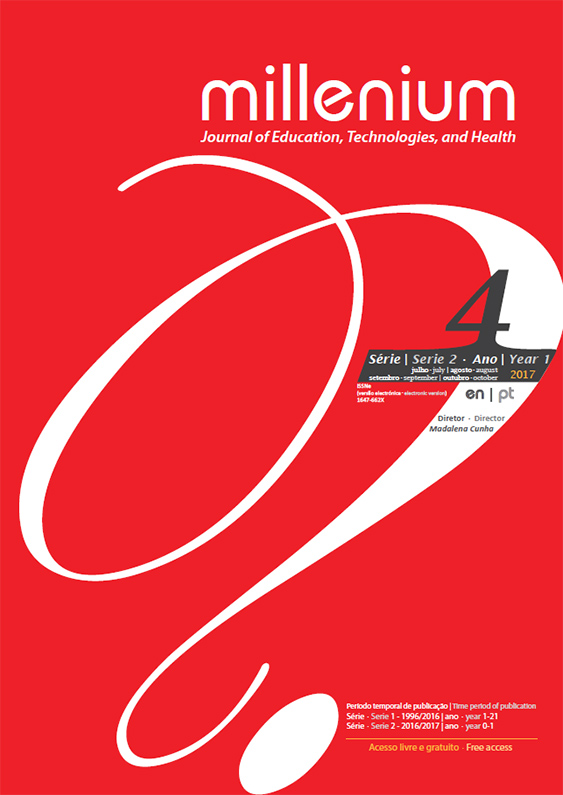Ontology elements identified in different nursing classification systems
DOI:
https://doi.org/10.29352/mill0204.05.00151Keywords:
Nursing Informatics, Terminology as Topic, Knowledge RepresentationAbstract
Introduction: The International Classification for Nursing Practice (ICNP®) includes an ontology to represent the terms contained within it. In Brazil, in order to contribute to the development of this classification, an ontology was elaborated, comprising the representation of concepts and terms from the International Classification of Public Health Nursing Practice (Classificação Internacional para as Práticas de Enfermagem em Saúde Coletiva – CIPESC®). The identification of ontology elements in the aforementioned classification systems helps to understand how they might be used to represent the elements of nursing practice in an automated manner.
Objectives: To identify ontology elements in the ICNP® and CIPESC®.
Methods: Documentary, exploratory, and descriptive study. Data collection was based on the capture of structural characteristics of the various versions of the ICNP® and of the CIPESC®, including axis structure and term hierarchy structure.
Data analysis was performed by comparing the elements of the captured characteristics with the following ontology elements: concepts, instances, properties, relationships, constrains and axioms.
Results: The structural characteristics of ICNP® and CIPESC® are presented. Concepts, properties, relationships, constrains, and axioms were identified in both classifications.
Conclusions: An ontology ensures consistency to nursing terminologies, providing evidence for practice and contributing to the unification of the nursing language. This research facilitates the development of ontologies for nursing practice based on nursing terminologies, contributing to the development of health policies by using ontologies in information systems.
Downloads
References
Associação Brasileira de Enfermagem. (2013). Associação Brasileira de Enfermagem 1926-1976: Documentário. Brasília: ABEn.
Baader, F., Horrocks, I., & Sattler, U. (2003). Description logics as ontology languages for the semantic web. Retrieved from: http://www.cs.man.ac.uk/~horrocks/Publications/download/2003/BaHS03.pdf.
Bisetto, L. H. L., & Cubas, M. R. (2015). Subconjunto terminológico da CIPE® para o cuidado com as pessoas com eventos adversos pós-vacinação. In: M. R. Cubas, & M. M. L. Nóbrega (Orgs), Atenção primária em saúde: Diagnósticos, resultados e intervenções. Rio de Janeiro: Elsevier.
Borst, W. N. (1997). Construction of engineering ontologies for knowledge sharing and reuse. Enschede: University of Twente. Retrieved from: http://doc.utwente.nl/17864/1/t0000004.pdf.
Cavalcante, M. D. M. A., Larocca, L. M., Chaves, M. M. N., Cubas, M. R., Piosiadlo, L. C. M., & Mazza, V. A. (2016). Nursing terminology as a work process instrument of nurses in collective health. Revista da Escola de Enfermagem da USP, 50(4), 610-616. Retrieved from: http://www.scielo.br/pdf/reeusp/v50n4/pt_0080-6234-reeusp-50-04-0610.pdf.
Chaves, M. M. N., Farias, F. C. S. A., Apostólico, M. R., Cubas, M. R., & Egry, E. Y. (2011). Breastfeeding: Nurses' practice under the perspective of the international classification of collective health nursing practices. Revista da Escola de Enfermagem da USP, 45(1), 194-200. Retrieved from: http://www.scielo.br/pdf/reeusp/v45n1/en_28.pdf.
Conselho Internacional de Enfermeiros. (2011). Classificação internacional para a prática de enfermagem: CIPE®: Versão 2.0. São Paulo: Algol.
Conselho Internacional de Enfermeiros. (2016). Classificação internacional para a prática de enfermagem: CIPE®: Versão 2015. Porto Alegre: Artmed.
Cubas, M. R., Brondani, A. M., & Malucelli, A. (2013). Nursing diagnoses and outcomes related to the circulatory-system terms (INCP®) represented in an ontology. Revista da Escola de Enfermagem da USP, 47(5), 1068-1075. Retrieved from: http://www.scielo.br/pdf/reeusp/v47n5/0080-6234-reeusp-47-05-1068.pdf.
Garcia, T. R., & Nóbrega, M. M. L. (2010). Inventário vocabular resultante do projeto CIPESC CIE-ABEn. In T. R. Garcia, & E. Y. Egry (Orgs), Integralidade da atenção no SUS e sistematização da assistência de enfermagem. Porto Alegre: Artmed.
Grimm, S., Hitzler, P., & Abecker, A. (2007). Knowledge representation and ontologies: Logic, ontologies and semanticweb languages. Retrieved from: http://knoesis.wright.edu/pascal/resources/publications/kr-onto-07.pdf.
Gruber, T. R. (1993). A translation approach to portable ontology specifications. Knowledge Acquisition, 5(2), 199-220. Retrieved from: http://www.dbis.informatik.hu-berlin.de/dbisold/lehre/WS0203/SemWeb/lit/KSL-92-17.pdf.
Guarino, N. (1998). Formal ontology and information systems. Proceedings of FOIS’98. Trento: IOS Press. Retrieved from: http://www.loa.istc.cnr.it/Papers/FOIS98.pdf.
Hardiker, N. R., Kim, T. Y., Coenen, A. M., & Jansen, K. R. (2011). A dynamic classification approach for nursing. AMIA Annual Symposium Proceedings, 2011, 543-548. Retrieved from: https://www.ncbi.nlm.nih.gov/pmc/articles/PMC3243282/pdf/0543_amia_2011_proc.pdf
Horridge, M. (2007). A practical guide to building OWL ontologies using Protégé 4 and CO-ODE Tools Edition 1.1. The University Of Manchester. Retrieved from: http://mowl-power.cs.man.ac.uk/protegeowltutorial/resources/ProtegeOWLTutorialP4_v1_3.pdf.
International Organization for Standardization. (2014). ISO 18104 2014: Health informatics: Categorial structures for representation of nursing diagnoses and nursing actions in terminological systems. Geneva: ISO.
Mattei, F. D. (2011). Elaboration of nursing diagnoses and outcomes related to the pain process through the combination of ICNP® terms (Dissertation). Pontifícia Universidade Católica do Paraná, Curitiba, Brasil.
Noy, N. F., & McGuinness, D. L. (2001). Ontology development 101: A guide to creating your first ontology. Stanford. Retrieved from: http://www.ksl.stanford.edu/people/dlm/papers/ontology-tutorial-noy-mcguinness.pdf.
Silva, R. R., Malucelli, A., & Cubas, M. R. (2009). Towards ontology CIPESC®. Journal of Health Informatics, 1(1), 22-6. Retrieved from: http://www.jhi-sbis.saude.ws/ojs-jhi/index.php/jhi-sbis/article/viewFile/89/74.
Strudwick, G., & Hardiker, N. R. (2016). Understanding the use of standardized nursing terminology and classification systems in published research: A case study using the international classification for nursing practice®. International Journal of Medical Informatics, 94, 215–221. Retrieved from: http://www.sciencedirect.com/science/article/pii/S1386505616301411.
Studer, R., Benjamins, V. R., & Fensel, D. (1998). Knowledge engineering: Principles and methods. Data & Knowledge Engineering, 25(1), 161-197.
Downloads
Published
How to Cite
Issue
Section
License
Authors who submit proposals for this journal agree to the following terms:
a) Articles are published under the Licença Creative Commons (CC BY 4.0), in full open-access, without any cost or fees of any kind to the author or the reader;
b) The authors retain copyright and grant the journal right of first publication, allowing the free sharing of work, provided it is correctly attributed the authorship and initial publication in this journal;
c) The authors are permitted to take on additional contracts separately for non-exclusive distribution of the version of the work published in this journal (eg, post it to an institutional repository or as a book), with an acknowledgment of its initial publication in this journal;
d) Authors are permitted and encouraged to publish and distribute their work online (eg, in institutional repositories or on their website) as it can lead to productive exchanges, as well as increase the impact and citation of published work
Documents required for submission
Article template (Editable format)















